
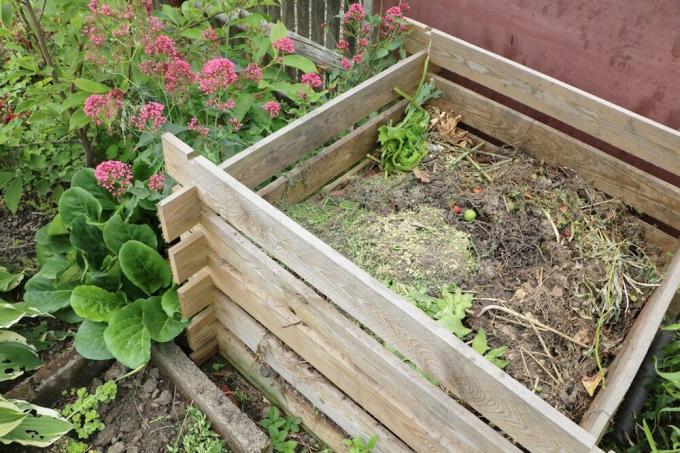
Table of contents
- Definition maggots
- Definition of grubs
- What goes in the compost?
- Prevent
- Good bird seed
- Home remedies for maggots
- remove compost
- plants around the compost
Anyone who owns a garden usually also has a composter. But if the wrong materials are disposed of here, excessive maggot formation can quickly occur. In addition to the strong odor, the resulting compost can no longer be used as fertilizer, as otherwise many pests would be distributed in the garden and damage the plants. Therefore grubs, larvae and maggots should be fought.
Definition maggots
The term maggots is primarily understood to mean the fly larvae that are born from laid eggs or directly. These get a bad rap as they are mostly found in organic materials such as spoiled food, garbage, feces, or on exposed, roasted meat. These maggots vary in size and can be recognized by the fact that they appear in large numbers and "scurry about on top of each other". If maggots are found in the compost, this is usually the reason why bad smells come from the composter. After a short time, the larvae pupate and become flies, which then lay their eggs again.
Tip:
Fly maggots usually do not harm plants in the garden as they feed on organic waste. It is therefore not tragic if these are unconsciously distributed with the fertilizer in the garden. If these are lifted underground, they usually die off.
Definition of grubs
Larvae are white, thick larvae that are usually found in a horseshoe shape. They can grow up to six centimeters long, the bodies are either orange-brown or light gray. There are also three pairs of legs in the front area. They are descended from various beetles, some of which the larvae can be quite harmful to the garden, while other species are not. However, if the grubs are found in the compost bin, it is tedious to only determine them according to their harmfulness. Because some species feed only on plant remains, but others also on living roots. This is how the following bugs lay their eggs on the compost:
- Cockchafer, very harmful to roots
- Rose chafer, feeds on plant debris
- scarab beetle
- Ribbed tufted beetles
- various other beetles
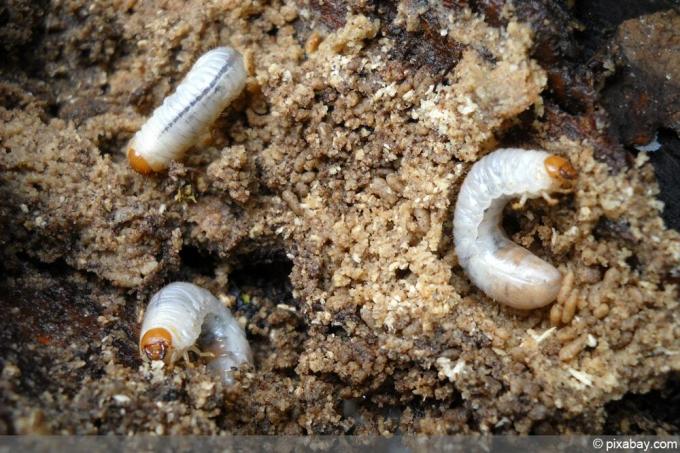
Grubs are not as common as maggots are. Therefore, when sighted, these can often be removed with the gloved hand and placed in a bowl ready for the birds.
Tip:
Anyone who finds grubs in the compost should sieve it well before fertilizing the garden so that none of the harmful maggots are lifted under the ground and, in the worst case, destroy newly planted plants could.
What goes in the compost?
A compost heap is a must in any garden. But often the wrong things are put in, which can lead to increased maggot formation, especially in the hot summer months. Especially if the organic materials are not compostable, they have no place in the compost and attract flies and bugs even more to lay their eggs. Therefore, the first measure to avoid maggot formation in the compost is proper separation. So only the following garden and kitchen waste should be placed in the composter:
- Vegetable and fruit leftovers
- Coffee or tea set with bag and filter
- Manure from small herbivorous animals
- crushed flower fragments
- chopped shrub or tree cuttings
- leaves
- crushed eggshells
- Lawn and grass clippings
- moss
- tree needles
- windfall
All other materials such as baby diapers, ashes, leftover cooked food or even cat and dog waste have no place in a composter and, above all, magically attract the pests and their larvae at.
Tip:
Actually, weeds are also decomposable, but should not be put in the composter. Because in this way they can spread again throughout the garden the next time you fertilize, even if the seeds have ended up in the composter.
Prevent
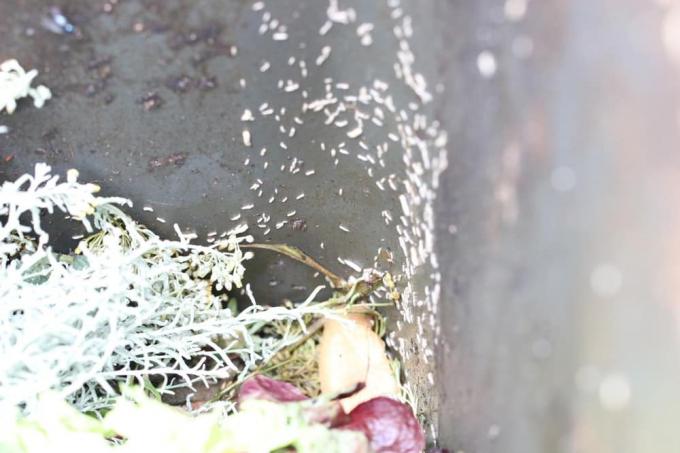
Proper use of a compost heap is the best prevention against fly larvae, maggots or grubs. In addition to filling it correctly, it also makes a lot of sense to prevent moisture in the composter itself. Because it can be very wet in the local latitudes, especially during the autumn, winter and spring months. But it is precisely this moisture that also increases the number of maggot populations. Because they need a humid climate for their development. Therefore, care should be taken that the compost is dry. There are the following options for this:
- Commercial composters are already rainproof
- otherwise protect with a cover from rain
- Mix materials into the filling
- anything that absorbs moisture is suitable
- sawdust
- Cardboard egg cartons
- newsprint
- primary rock flour or bentonite
So that the moisture and thus also a maggot infestation stays outside, you should avoid putting wet leaves, wet lawn clippings or wet plant remains in the composter. Everything should be dried well before it is disposed of.
Good bird seed
All native bird species prefer maggots as food. It is therefore important to have a lot of birds in the garden in addition to a composter. If the songbirds find nesting sites in the immediate vicinity, then they sit right at the source. For this, many niches, hedges and nesting boxes for the birds can be created around the compost heap. The compost can then be mixed regularly, so the maggots reach the surface and are readily accepted by the birds as food. The larger specimens can also be easily picked up with gloved hands and placed in a bowl for the birds to eat.
Home remedies for maggots
There are various home remedies that are supposed to help against larvae and the like if the compost is already infested. Of course, these must be compatible with the resulting fertilizer for the garden. The following home remedies can be used to free composters that are already infested
- Fold in the lime, sprinkle directly onto the pests
- do the same with silica
Tip:
Salt is also often suggested as a home remedy. However, salt should not be used in the resulting fertilizer in the composter, as it will damage the plants after Fertilizing via the roots can cause lasting damage, as is often the case with road salt in winter becomes.
Don't use chemicals
Even if there are many chemical clubs against maggots, larvae and Co., these are not suitable for the composter. Because what decomposes and develops here should later serve as natural fertilizer in the garden. However, if chemicals such as bleach or carburetor cleaner are used here, then the entire compost becomes unsuitable as fertilizer. Therefore, the use of chemicals should be avoided in any case.
remove compost
If neither prevention nor home remedies have helped against the larvae, then unfortunately the fertilizer for the garden year is lost and should be removed and disposed of altogether. It is important here that the maggots are also destroyed. Depending on how high the compost heap is and how big it is, the leftovers can be sealed airtight in plastic bags and disposed of in the residual or household waste. If it is a larger volume, boiling water can also be poured over it before disposal, which can also kill the larvae. If all residues have been removed, proceed as follows:
- clean the composter well
- wash well with vinegar solution
- then let it dry well
- reconsider location
- Is it too warm or too wet at the location?
- Pay attention to the correct filling when refilling
Tip:
Generally, beetle larvae cannot be avoided because they like to be deposited in plant remains, Fly larvae, on the other hand, only appear in the compost bin if this is incorrect, for example with meat-based leftovers, has been filled.
plants around the compost
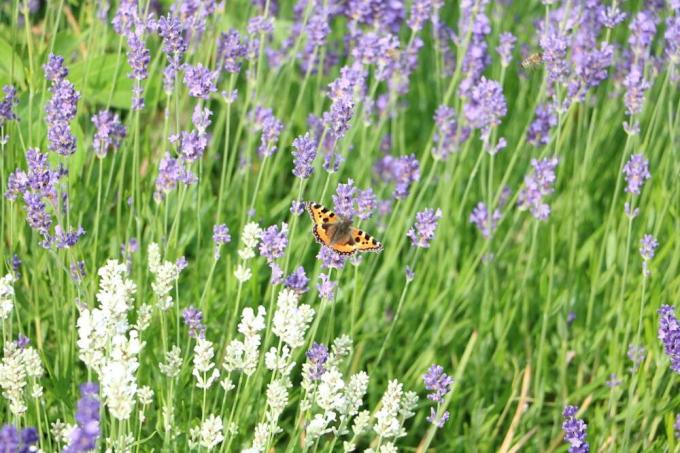
So that the flies are not even tempted to lay their eggs in the composter, they can also be driven away with various smells. To do this, it is helpful to settle various plants around the compost heap whose smells the flies do not like. Furthermore, this also has the positive effect that the composter can be decoratively designed in the corner. The flies like to be driven away by the following smells:
- basil
- lavender
- peppermint
- incense
- eucalyptus
- laurel
- marigolds
- geraniums
It is also helpful to regularly put leftovers of these plants in the composter so that the smell from the inside drives the flies away or does not attract them in the first place. However, these agents are not suitable for stopping the beetle larvae, which are usually not distracted by these odours.
Tip:
A compost heap in a corner of the garden can be quite unattractive. But a beautifully laid out herb bed with a small laurel bush in the middle looks extremely decorative. The same applies when tubs with flowering plants are placed around the compost bin and a birdhouse is set up nearby.
 garden editorial
garden editorial I write about everything that interests me in my garden.
Learn more about making compost
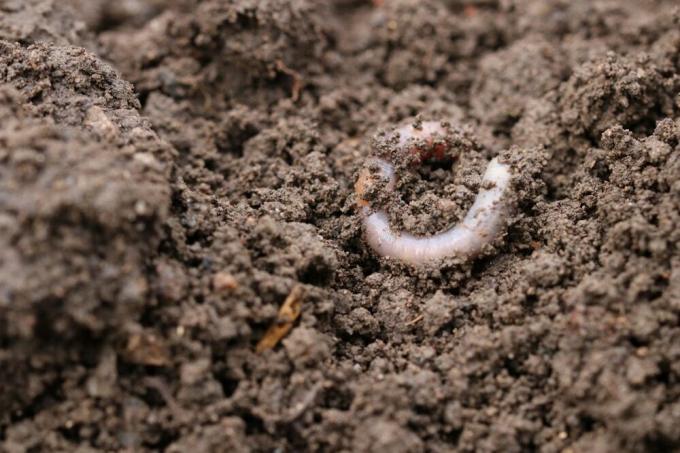
Dampen the earth properly: build your own earth damper | sterilize compost
Sterilizing soil is a common practice that more and more home gardeners are embracing. This allows soil and especially compost to gain optimal quality. The gardening expert explains how to do it correctly and how easy it is to build an earth damper yourself.

Build your own worm box: Instructions | DIY worm composter
Building a worm box yourself is quite easy, but has numerous advantages. In our instructions we show how the DIY worm composter can be made with simple means and in just a few steps.

Build your own composter 12 tips for rain barrels, pallets & garbage cans
A composter is ideal for the garden and balcony. But the numerous options represent a hurdle. Each variant has its advantages. But no matter whether you build your own composter or buy it: there are some aspects that you should consider.

Balcony worm composter: Create compost on the balcony
Gardening is now done in the smallest of spaces, so growing vegetables on the balcony is no longer out of the question. However, a prerequisite for a good harvest is high-quality soil, which can be produced even in a limited space using vermicompost.
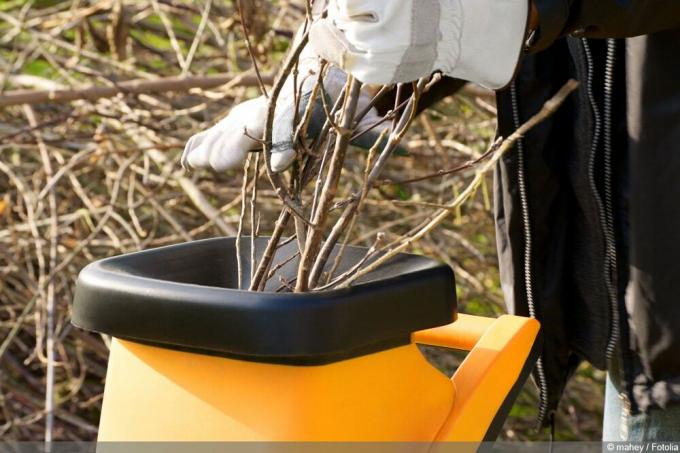
Shredding garden waste and hedge trimmings: which shredder is suitable?
Gardening results in branch cuttings and green waste that can either be disposed of or reused. With a garden shredder, the greens can be processed into compost or mulch and made available for garden use. There are various variants to choose from, which can be adapted to the intended use.

Build a pass-through sieve yourself | Mesh size for compost, soil and sand
In a well-equipped home garden, a pass-through sieve removes unwanted components from compost, soil and sand. With a little manual skill and these instructions, you can easily build a stable garden sieve yourself. You can find out here which mesh size guarantees perfect results.



